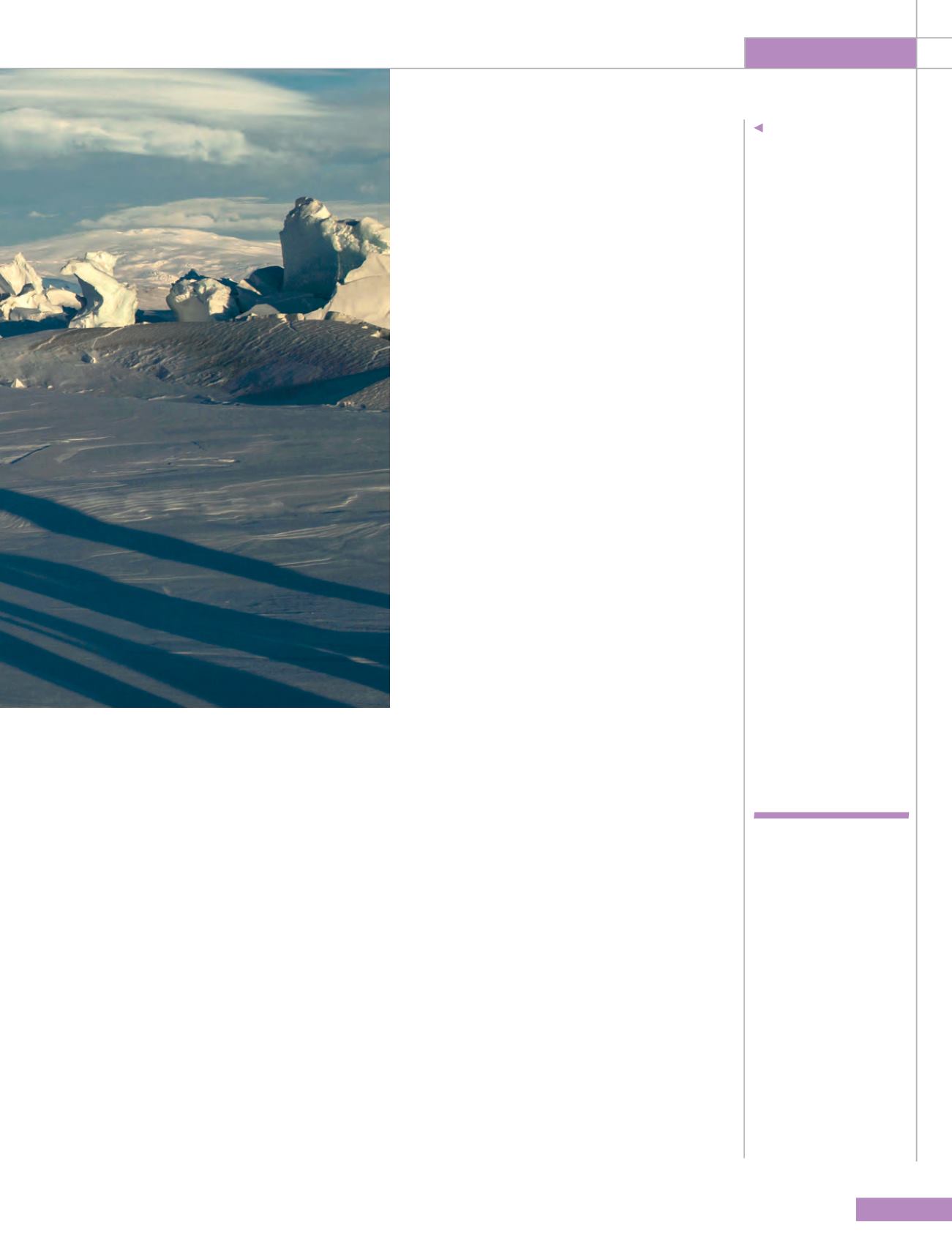
ROOM
89
Space Science
Pressure ridges near
McMurdo station in
Antarctica, where the
ARIANNA logistics base is
located. Pressure ridges
occur when the annually
forming sea ice pushes
into the permanent ice of
Antarctica.
Generally
speaking, the
assumption
holds that the
higher the
energy of the
neutrino, the
rarer it is
trying to count neutrinos, but they also want to
study their energy.
Certain energy ranges, or in other words
different ranges of speed, are occupied by
neutrinos from different sources. For example,
neutrinos produced in nuclear reactors have
energies between three and 10 mega-electronvolts
(MeV) and are usually more energetic than those
from the Sun (at less than 1 MeV). Conversely, those
produced in the atmosphere are more energetic (at
1 GeV - 10
5
GeV), so too are astrophysical neutrinos
(10
5
- 10
6
GeV) and cosmogenic neutrinos (> 10
7
GeV). They all have their distinct place in the
energy spectrum. So if one wants to study different
sources, the sensitivity of the detector has to be
adjusted to the desired energy range. Generally
speaking, the assumption holds that the higher the
energy of the neutrino, the rarer it is.
Cosmogenic neutrinos are believed to be even
rarer than the already extremely rare astrophysical
neutrinos detected only recently by the IceCube
experiment at the South Pole. This is currently
the largest neutrino detector in the world and it
detects less than 10 astrophysical neutrinos per
year in 1 square kilometre of ice (‘IceCube’).
Cosmogenic neutrinos are linked to ultra-high
energy cosmic rays and these rays are the most
energetically charged particles known in the
Universe today. With energies that are several
million times higher than what can be achieved by
man-made machines, these particles are created
by yet unknown astronomical objects.
There have been many theories linking them
to black holes or gamma ray bursts, but no
convincing evidence has yet been found to tie
a type of source to the particles. The search
for these elusive sources has been hindered
by the fact that charged particles do not travel
in straight lines. Their trajectories are bent by
galactic and intergalactic magnetic fields, which
makes it challenging to pin-point the objects in
question. For example, a source we see towards
Galactic North might actually be in the South, thus
presenting an almost unsolvable problem.
Yet, there is hope. It has been postulated that a
fraction of these charged cosmic rays will interact
with the cosmic microwave background, the
ubiquitous background residual of the Big Bang, close
to the phenomenon that emitted them. In these
interactions, neutrinos will be produced that carry
away a lot of the original energy of the cosmic ray.
As neutral particles, these cosmogenic neutrinos can
then travel unhindered in straight lines before they
reach Earth. Consequently, a detection of cosmogenic
neutrinos would allow us to directly pin-point the
source. Unfortunately, however, all current neutrino
detectors are too small to find cosmogenic neutrinos.
The way forward
Building an even bigger detector either requires an
enormous amount of funding when using the same
technology or a different approach. A neutrino
can only be observed indirectly by detecting its
interaction products i.e. the tell-tale sign that points
to its existence. A common method is to look for the
Cherenkov light signal that is produced by charged
particles originating from a neutrino interaction that
travel faster than the speed of light in the medium.
As light ‘slows-down’ when it is not in a vacuum this
effect happens without violating the theory of General
Relativity and can be interpreted as the equivalent
to a supersonic boom in air. In order to detect this
Cherenkov radiation, light detectors monitor the
medium at different positions and if a signal starts in
the detector volume without an incoming signal, a
neutrino interaction is recorded as being observed.
What drives the overall costs of a detector is,
perhaps bizarrely, the space between the individual
Chris Persichilli/ARIANNA


